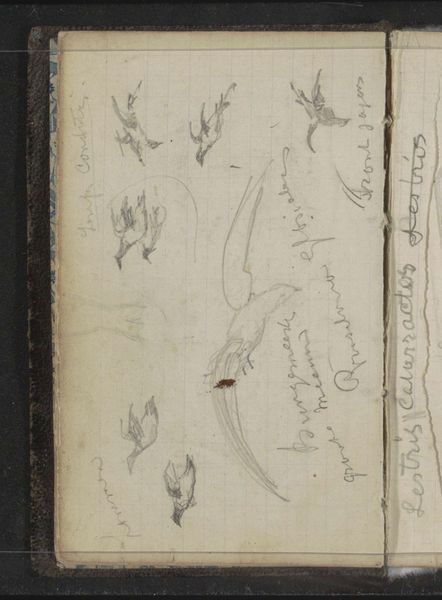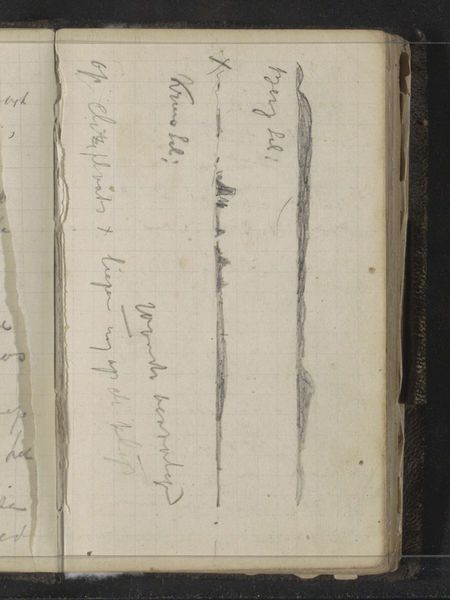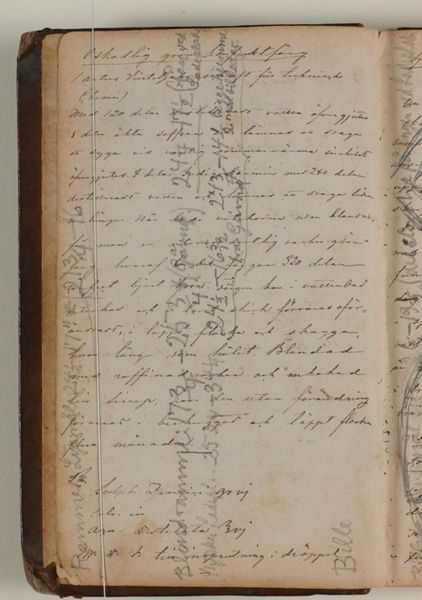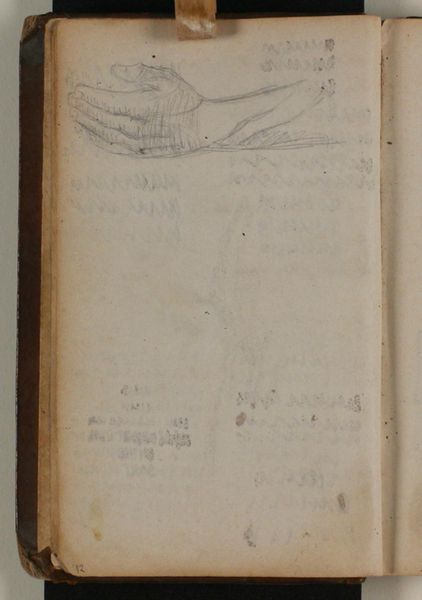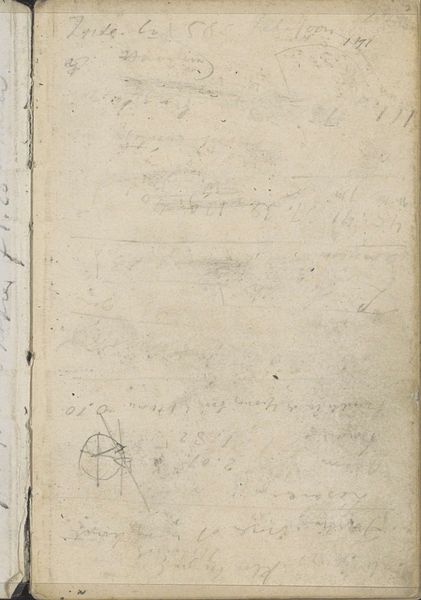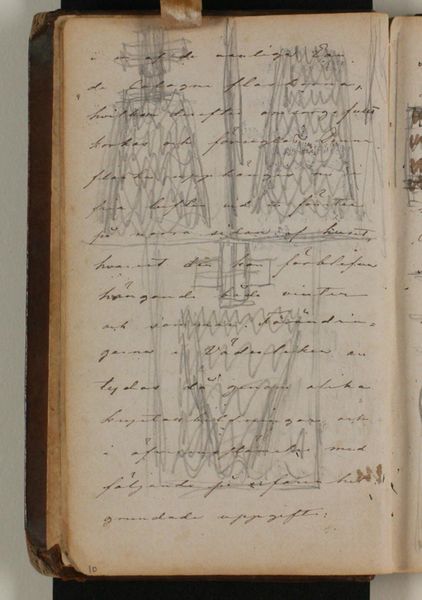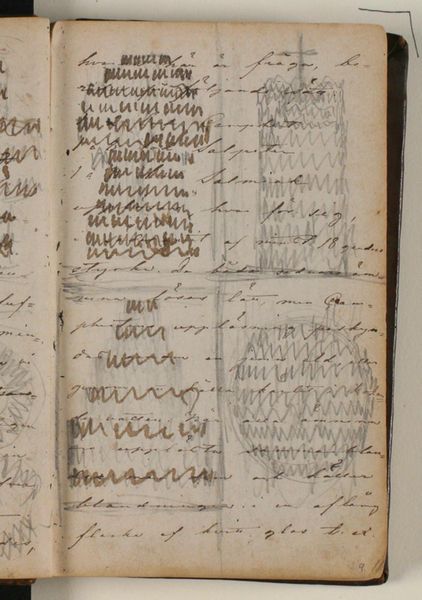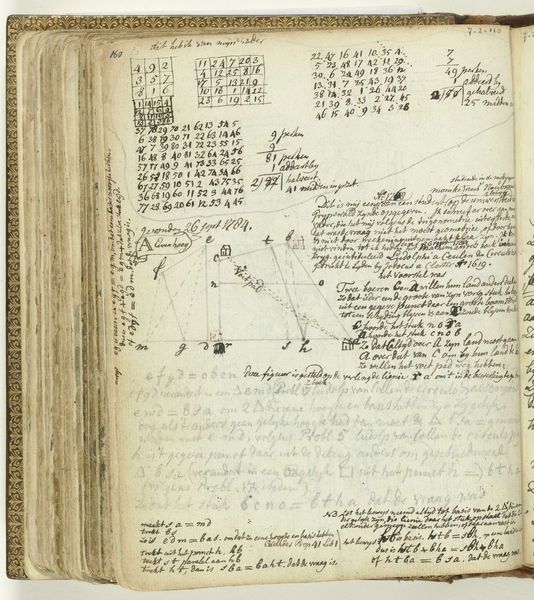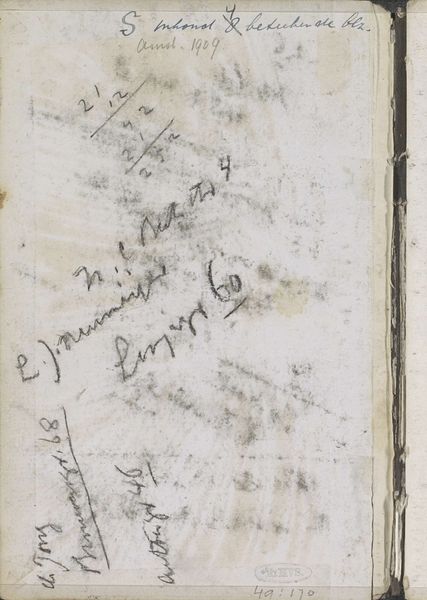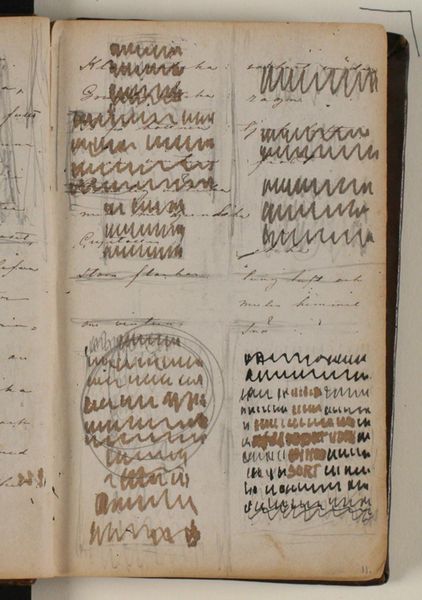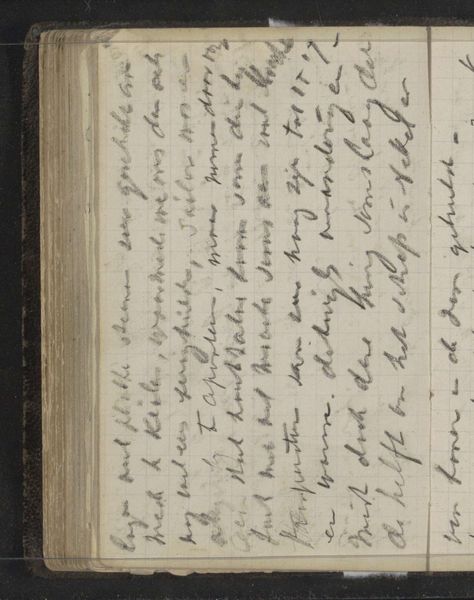
Notat vedr. Nørresundbys fortidige fortifikation 1932 - 1935
0:00
0:00
drawing, paper, watercolor, pencil, pen
#
drawing
#
paper
#
watercolor
#
coloured pencil
#
pencil
#
pen
#
watercolor
Curator: So, this is "Notat vedr. Nørresundbys fortidige fortifikation" by Niels Larsen Stevns, made between 1932 and 1935. It's a drawing using pen, pencil, colored pencil, watercolor, and paper, currently residing at the SMK. I find its layered look intriguing, almost like palimpsest. What do you see in this piece, considering its creation process and the materials used? Editor: I'm drawn to the way the artist combines various drawing and painting media – the pen, pencil, and watercolour washes. To me, it speaks to a layered exploration, almost archaeological in nature, mirroring the unearthing of a fortification’s history. It makes me wonder, how does the act of combining these materials influence our understanding of history and place? Curator: Exactly! Considering the historical context – the interwar period – and the choice of relatively accessible, "everyday" materials like pen, pencil, and paper, suggests an engagement beyond pure aesthetics. Perhaps Stevns aimed to democratize the process of historical investigation. Instead of grand oil paintings or sculptures, he’s using these commonplace tools to delve into Nørresundby’s past. What does that materiality tell you about the accessibility, the “consumption,” of history itself? Editor: That’s fascinating! It’s as if the drawing itself becomes a form of accessible, almost "folkloric," record-keeping. Using those modest materials suggests an intention to connect with local audiences directly. The drawing ceases to become solely about representation but more of an affordable process of exploring local knowledge. Curator: Precisely. The "low" materials elevate local knowledge, making it accessible beyond academic or elite circles. This approach blurs lines between historical documentation and popular engagement, using materials and process as means of claiming history. What does that tension—high art vs. low craft—highlight? Editor: It pushes us to consider who has access to defining history and the value of their labour in the process. The choice of accessible materials disrupts traditional notions of art historical canon. Thank you, I never thought of it that way! Curator: The social context and making process reveals so much, doesn't it? I see how a seemingly simple sketch on paper encourages an intense, crucial conversation about how history is created and made accessible through its materiality.
Comments
No comments
Be the first to comment and join the conversation on the ultimate creative platform.
